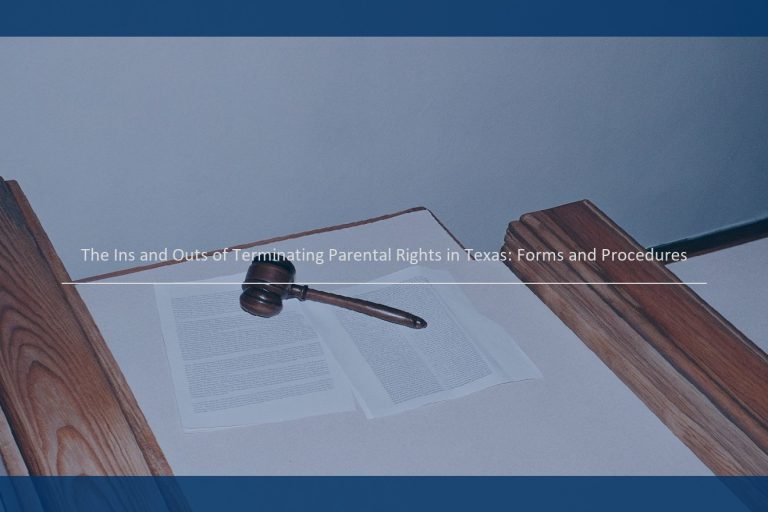What is Required for an Employment Agreement to be Legally Binding
First, is there mutual consent and accord? Both parties must agree to the essential terms and conditions. That’s the obvious stuff. But also, was there a meeting of the minds on other lesser terms?
Second, was the offer and acceptance communicated? That is, did one side make an offer and the other side accept the offer? It is not enough to have a contract that just happens to be written down in a document somewhere. The offer must be made, typically by the employer, and the acceptance must be communicated back to the other party. Verbal acceptance belatedly confirmed in writing is usually acceptable.
Third, was consideration exchanged? When we use the word consideration in the context of a contract, it means something of value is exchanged between the two parties. In the context of a legal employment contract , it is the offer of employment (i.e. the job) that is the consideration from the employer. The employee gives the employer his or her work.
Are there any exceptions?
Yes, in some circumstances, an employment contract can exist even where there was no mutual consent or consensual acceptance, or if consideration was not exchanged. Consideration might be present, or at least arguable, if the employee does something as a part of the hiring process that relates to a preparation for work (e.g. training, or even a non-competition undertaking in some cases). If the employee is more experienced at negotiating these things, he or she may be able to argue that there was consideration for the contract based on an implied promise that the conduct or information received would not be used or disclosed against the employee.
In the end, the specifics of the circumstances will dictate whether each element of the above process occurred.

Various Types of Employment Agreements
Employment agreements come in various forms and can be either written or oral, as per the provincial employment standards legislation. These contracts can also take different forms depending on the duration and type of employment. Permanent employment agreements are the most common in Alberta and lay out the conditions of permanent employment. They are legally binding from the first day of employment. They require the agreement of both the employer and the employee as evidenced by the signing of the contract of employment or verbal acceptance of the terms contained therein. The employment agreement will include conditions such as salary, the position itself, length of employment, vacation, termination notice beforehand and any bonuses. This can be contrasted with temporary employment agreements. A temporary employment contract ends on a specific date or after a specific period of time and is used in situations where the employee is only needed for a specific period. The employer must inform employees of the period of suspension of their temporary employment contract, in order to avoid civil liability for challenge of a wrongful dismissal. Persons who agree to work at a fixed period may be reimbursed the costs of travelling expenses, including meals and lodging. Also, fixed-term contracts of employment are implicitly renewed on the same conditions after their expiry, unless they are terminated before the deadline or if the employer is able to show, in court, that the employment is not required. Freelance contracts are also a form of employment agreement. Freelance workers offer their services to various companies. Freelance employment contracts are usually signed when there is an intention to work as a self-employed individual for a certain amount of time. Therefore, a freelance contract identifies the contractor as an independent worker. Freelance contracts detail the terms under which the freelancer will be providing services to a number of companies. These contracts will include conditions such as the salary, the services to be provided, and the duration of the contract. The employer must comply with legal conditions relating to holidays and leave of absence in Alberta, and must respect statutory obligations relating to salary and compensation of the employees. These conditions will be binding on both the freelancer and the employer under the terms of the explicit or implicit contract unless a reasonable time period is provided to allow the freelancer to carry out certain necessary activities such as finding new clients.
The Importance of Having An Employment Agreement
Employers and employees may enter oral agreements regarding their employment, but these agreements are very difficult to enforce and will almost never provide the clarity and protection an employment agreement does. The express terms of an employment agreement will be interpreted according to contract law principles which mean that all terms in the agreement are binding between the parties. These terms are not only obligations of the employee, but can be obligations of the employer as well for example, a termination provision in an employment agreement will usually address the notice period for termination of the employee’s employment, or the amount of the pay in lieu of notice should the employer elect to provide pay in lieu of notice. This provision can be useful for both parties because the employee will have adequate notice of the length of notice he or she is entitled to upon termination, and the employer will have certainty as to how much notice is to be provided.
Employment agreements should also include implied terms of the employment relationship which outline the scope of the parties’ obligations to one another and particularly the employee’s obligations to the employer. Courts have held that unless they are limited by an express provision or statute, these implied obligations will also be binding on the parties. There are so many implied terms to an employment relationship, including: confidentiality and vaguely worded terms such as "faithfulness" and "loyalty" which can be expressly defined in an employment agreement to provide clarity for the parties’ respective duties.
Common Terms Found In a Legally Binding Employment Agreement
Employment agreements are legally enforceable only if they include essential provisions. The terms discussed below are common in employment contracts and provide the basis upon which an employment contract can become legally enforceable.
Job responsibilities: Details of your position should be outlined in the agreement, including your title, a brief summary of your duties and an overview of your supervisor’s responsibility and who you will supervise.
Salary: This should include your starting salary, any guaranteed increases (for example, annual increases or guaranteed bonuses), benefits in kind (company car, accommodation), medical aid and details of your remuneration termination payments.
Benefits: In addition to the salary, this section can cover compensation for vehicle use, mobile phone costs and recreational facilities use. Employment agreements can also detail company contributions to pension funds, retirement annuity funds, medical aid and contributions for voluntary unemployment insurance.
Confidentiality: These clauses address the confidentiality of company information, such as customer and supplier lists. Confidentiality clauses also attempt to prevent you from disclosing or using information obtained through your position for purposes not approved by the employer.
Termination: Termination clauses detail the grounds for dismissal and notice periods.
Legal Ramifications of Breaching an Employment Agreement
If, despite the parties’ efforts to craft an enforceable employment agreement, one of the parties breaches the agreement, then the other party may be entitled to certain remedies. Most of the time, the court is asked to award damages to the non-breaching party for any financial losses it suffered as a result of the breach. This rule, however, does not apply where, for example, an employer breached an agreement by firing a key employee without cause before the end of the specified term. In that situation , the employee might be able to show that he or she would have been able to mitigate his or her damages and obtain a job with similar pay at another company, making the damages minimal at best.
Instead of (or in addition to) seeking damages, the aggrieved party may also be able to obtain an order of specific performance, where the court orders the breaching party to fulfill its obligations under the contract. For example, an executive with a restrictive covenant stating she cannot work for a competitor in the region for a period of six months after termination might be subject to a temporary injunction preventing her from working at a competing firm.
How Courts Are Interpreting and Enforcing Employment Agreements
Employment agreements, like all contracts, are subject to the law of contract interpretation. But, the judiciary is not also as averse to holding parties to their contractual bargain, depending upon the nature of the contract. When it comes to employment contracts or agreements, courts have defined a few parameters. The first is that a written agreement does not need to be signed or otherwise executed to be enforceable. A contract can be upheld based upon a course of dealing or actions of the parties that intends for them to be bound by the provisions of an agreement.
In terms of determining whether or not an employee has agreed to the terms of an employment contract, whether a plain reading of the terms is required in order to provide notice, courts generally do not look to the same formalities they would for a legally binding agreement like a real estate contract. For example, at least in the employment context, courts have held that a party is presumed to have read a term of service or employee handbook. Additionally, courts may satisfy the notice requirement in cases where an employee has acknowledged a receipt of a contract or policy via signature or electronic means (i.e. click through agreement) but while at the same time not foreclosing on a party’s claims or arguments concerning the validity of the contract.
When deciding whether a contract is unconscionable or otherwise not enforceable because of some underlying issue of consent or illegality, courts will generally look to the following: whether a contract is procedurally unconscionable (where "a party’s lack of meaningful choice.") by analyzing if any of the following conditions apply: (1) contract terms that are so one-sided as to oppress or unfairly surprise an unsuspecting consumer; (2) an absence of meaningful choice on the part of one of the parties together with contract terms which are unreasonably favorable to the other party. If the procedural unconscionability standard is met, the court will then look to the substantive unconscionability standard (even if not argued by the parties), which will be satisfied if the contract’s terms are so one-sided as to shock the conscious (principle of unconscious).
In a nutshell, if a contract does not establish clear terms that would give rise to a reasonable expectation that the parties understood and agreed to be bound by the terms of an agreement, a contract will not be enforced.
Tips for Making Sure That Your Employment Agreement is Enforceable
When drafting employment agreements, there are some best practices that can help ensure the agreement will be expressly enforceable. First and foremost, the terms of the agreement must be clear and unequivocal and the parties must understand and agree to those terms or otherwise they may be at risk of future dispute and litigation. The following are some tips to ensure your employment agreement is clear and unequivocal: The terms of your employment agreement should be unambiguous and easy to comprehend to avoid confusion between the parties; The employment agreement should be drafted simply and clearly to avoid the need for legal expertise to interpret its provisions; Consider providing definitions of key terms used in the employment agreement; and Be careful not to draft ambiguous language that has not been proven to be enforceable. Most importantly, be sure to regularly review and, if necessary , update your employment agreements and policies to comply with current legislation. Also ensure your contracts and policies comply not only with the law but also with other applicable agreements entered into between the employer and the employee. Lastly, when entering into an employment agreement, take the necessary steps to ensure the document is not misleading a party into signing an agreement with the expectation they will receive benefits or compensation they are not entitled to.
Don’t overlook that a contract exists, especially when it comes to your employee handbook, which may either be considered an "offer" of employment or a subsequent counter-offer to a pre-existing offer, and/or may have been adopted as part of the employment agreement. Be sure to consider whether any of the contractual provisions brought up in this article have already been agreed to, in whole or in part, by the parties.




+ There are no comments
Add yours